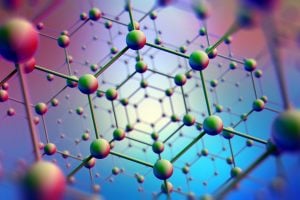
Using a new polymer (plastic) material combination, Johns Hopkins engineers have created a conducting material blend that has superior ability to remain stable at a variety of temperatures and is more capable of generating electrical power from waste heat than are previous plastic blends.
The team’s results were recently published in Advanced Materials.
“It is a challenge to create flexible and printable polymers that can conduct electrons,” said Howard Katz, lead author of the study and chair of the Department of Materials Science and Engineering at Johns Hopkins Whiting School of Engineering. “Our goal was to create a material with this combination of properties.”
This study marks the first time that engineers have used a polymer of a positive salt ion to alter the composition and characteristics of another polymer to enhance its ability to conduct electrons—a process called “n-doping.” N-doping has been used in creating organic transistors, solar cells, photocatalysts, and light-emitting diodes.
The team’s approach was inspired by polymers that primarily conduct positive charges, called “holes.” The most commercially successful of these materials uses a second polymer to form the holes, and Katz’s team thought this approach could work for them, too.
“Using such salts as dopants is relatively new, even as small molecules,” Katz said. “We were simply the first to think of combining the salt and polymer dopant concept for electrons, and it worked.”
The resulting material could be especially useful in thermoelectrics, in which heat is used to generate electrical power.
“Besides thermoelectrics, the material could be used as a conductive layer on the side of solar cells or light-emitting diodes (LEDs) where electron conduction is needed. There are many design changes that we could make in the polymers to improve performance further; this work is in progress,” Katz said.
This research was supported by the National Science Foundation’s Division of Chemistry.